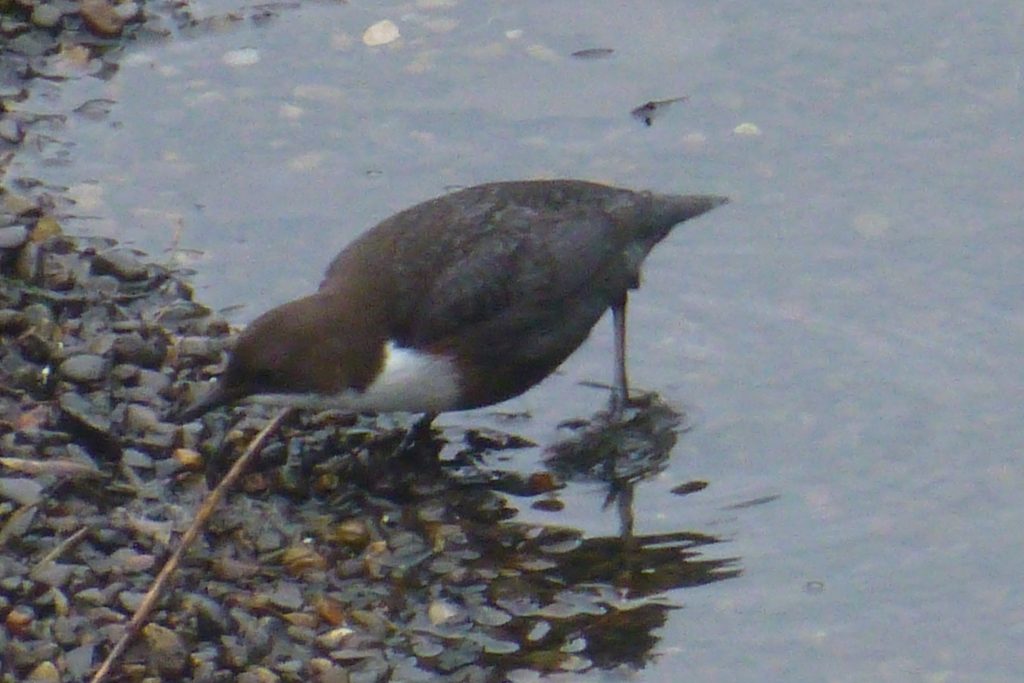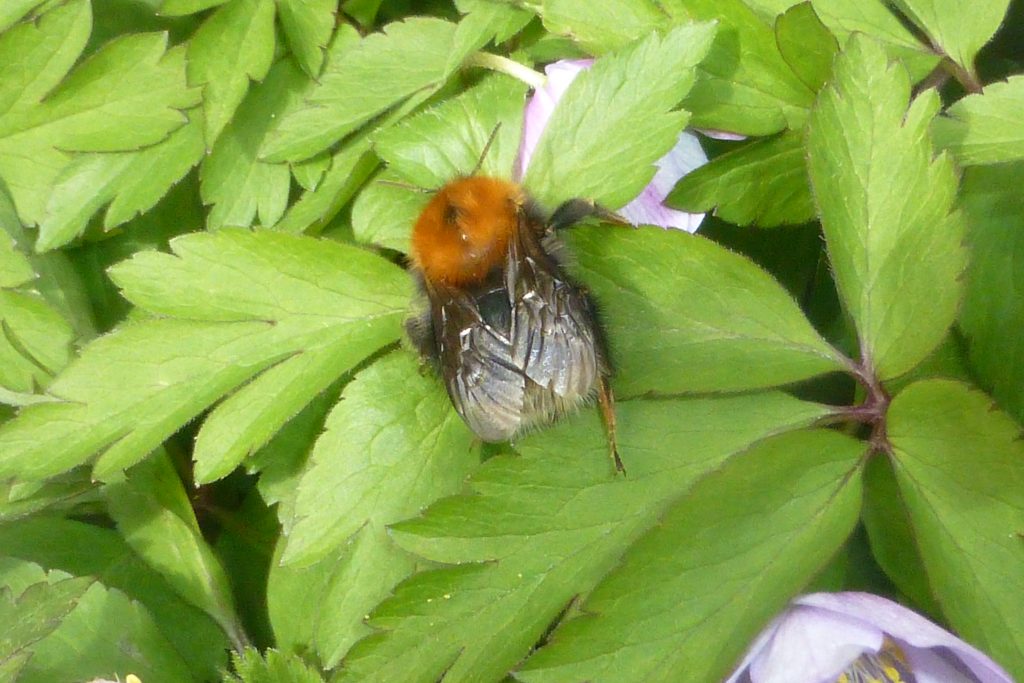April 2016 was rather dry except for one really wet day. However, apart from some days mid-month, it was distinctly chilly, and snow or sleet fell, at least on higher ground like the Pentlands, on three days, two of those being at the end of the month (28th and 29th). Twelve species were added to the Garden’s list. Eight of these were molluscs recorded by an expert in the glasshouses on the last day of the month, Saturday 30th; these took the grand total past the 800 mark, bringing it up from 791 to 803. One of the new non-molluscan records, Gorse Weevil, was also a new record for the Lothians.
Birds Forty-one bird species were recorded at the Edinburgh Garden during April 2016, one more than in March. Several of these were one-day visitors or fly-overs. Most notable were the first Green Woodpecker since 2014 (19th, in the Lower Woodland), and Nuthatch on three days at the beginning of the month (4th, 6th and 8th). Both Dipper and Kingfisher visited on 13th, which was the day after about 36 hours of rain so no doubt they were both taking refuge from a high and turbulent Water of Leith. Three Buzzards flew over on 5th and one on 19th. Migrant arrivals included Chiffchaff (all month, building up to at least three singing males), Willow Warbler (15th–20th and 29th), and singing Blackcap (from 19th). No Redwings were seen and these are assumed to have departed back to Scandinavia until the autumn. A Collared Dove was singing outside the herbarium at the end of the month (25th and 28th) – a relatively unusual visitor nowadays although in the 1970s and 1980s they were resident year round. The two Canada Geese that were present at the end of March were also seen on 1st, 4th and 7th April but the Coot seen in March was absent all month. The complete list of 41 species recorded during April was: Blackbird, Blackcap, Blue Tit, Bullfinch, Buzzard, Canada Goose, Carrion Crow, Chaffinch, Chiffchaff, Coal Tit, Collared Dove, Dipper, Dunnock, Feral Pigeon, Goldcrest, Goldfinch, Great Spotted Woodpecker, Great Tit, Green Woodpecker, Greenfinch, Grey Heron, Herring Gull, Jackdaw, Kingfisher, Lesser Black-backed Gull, Long-tailed Tit, Magpie, Mallard, Mistle Thrush, Moorhen, Nuthatch, Oystercatcher, Robin, Siskin, Song Thrush, Sparrowhawk, Stock Dove, Tree Creeper, Willow Warbler, Wood Pigeon, Wren.
Insects and other invertebrates: April saw the first butterflies of 2016: Peacock on 7th was the year’s first butterfly record and the species was also seen on 14th and 20th. Comma was also recorded on 20th while an Orange-tip was seen on 27th. No successful moth trapping was undertaken during the month. The year’s first Common Wasp was recorded on 14th (also 18th and 19th), and Common Carder Bees were seen sporadically but in very low numbers from 8th. Tree Bumblebees were seen on 14th and 19th and Buff-tailed, Red-tailed and Early Bumblebees were also recorded. Andrena bicolor was the year’s first solitary bee record (18th) and Andrena haemorrhoa was seen near the month’s end (27th). Four hoverfly species were seen on warmer or sunnier days: Melanostoma scalare (14th), two species of Banded Hoverfly, Syrphus ribesii and Syrphus torvus (14th onwards), and Platycheirus albimanus on several days near the end of the month. The crane fly Tipula lateralis was a new Garden record (27th) although it is apparently fairly common in early spring. RBGE staff photographer Lynsey Wilson found and photographed Greater Bee-fly in the Upper Woodland on 20th which was probably the sunniest and warmest day of the month. As in March, the leafhopper Empoasca vitis and the Gorse Shield-bug were recorded twice. Three different ladybird species were seen: Seven-spot (14th and 19th), Pine (8th and 18th) and 10-spot by Lynsey Wilson again on 20th. The latter is a very variable species and the one she found had black spots on a red abdomen. Gorse Weevil Exapion ulicis on 14th and 19th was a new Lothians record as well as new to the Garden; a separate Botanics Stories article was posted earlier (http://stories.rbge.org.uk/archives/19988). A springtail, Entomobrya multifasciata, found on bark on 8th was not only a new Garden record but the first identified member of that group of insects (Collembola) for the Garden. A fourth new Garden record for April was the Turf Running-spider, Philodromus cespitum (14th). Common Rough Woodlouse was recorded on 5th and 19th. Finally, fourteen species of mollusc were recorded in our glasshouses by Tom Walker on 30th. Tom is gradually visiting all the UK’s heated glasshouses to record the, often alien, molluscs that live in them. Eight of the fourteen were new Garden records: these were Allopeas clavulinum, Cochlicopa lubrica, Oxychilus draparnaudi (see photo below), O. navarricus helveticus, Spermodea lamellata, Vallonia costata, V. excentrica, and Zonitoides excavatus.



![Oxychilus draparnaudi, one of eight new mollusc records made in the glasshouses on 30 April by T. Walker. Photo credit: By Michal Maňas (User:Snek01) (Own work (cropped into format 1:1)) [CC BY-SA 2.5 (http://creativecommons.org/licenses/by-sa/2.5)], via Wikimedia Commons](http://stories.rbge.org.uk/wp-content/uploads/2016/05/Oxychilus_draparnaudi_2-Michael-Manas.jpg)